A wildlife adventure and a serendipitous, strike-it-lucky discovery led Catherine McColgan to a new-found appreciation of the hidden joys of Donegal and Derry
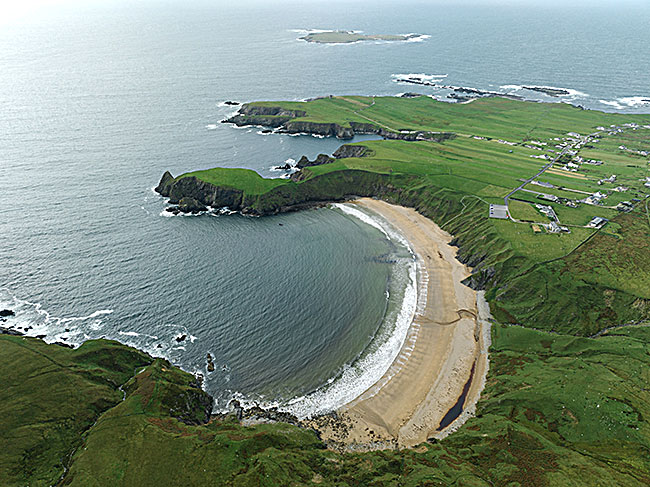
Last May, I saw grey seals, alpacas, and dolphins only an hour or so away from England.
I know … how on Earth did I get to South America so quickly, right? Some supersonic, high-speed invention. Or maybe I live near Lima, Peru? Nope!
I was actually on holiday in Ireland’s most northerly county, Donegal, the land of horses, pigs, cows and farmland, or so I thought. An unexpected two-day wildlife adventure, ending in a big, serendipitous, strike-it-lucky find taught me otherwise.
After two hours, we are journeying back to the mainland, enjoying the breeze in our hair and living in hope of our ultimate wildlife find – dolphins!
This surprising home to the exotic is located around Malin Head, Ireland’s most northerly point, only an hour and a quarter’s drive from the City of Derry Airport or two hours from Belfast International (flights to either Derry or Belfast are available from most major London airports and some regional ones.)
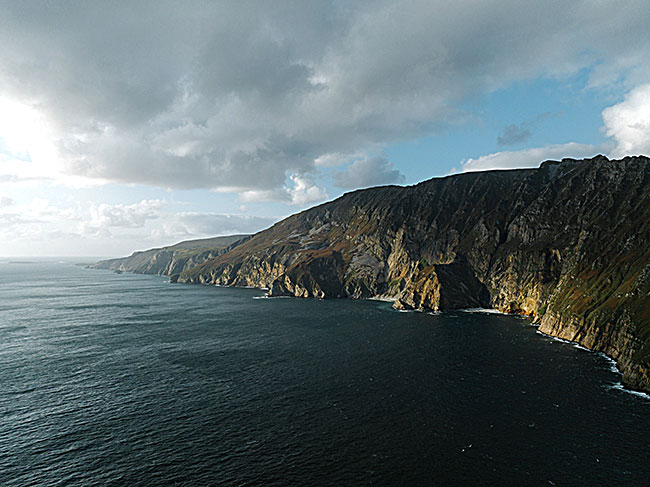
With Belfast and Derry easily accessible, the journey to Donegal has lots to offer those who want to make a day of it – the Titanic Belfast, Derry’s murals and the Walls of Derry are just a sprinkling of sights to see.
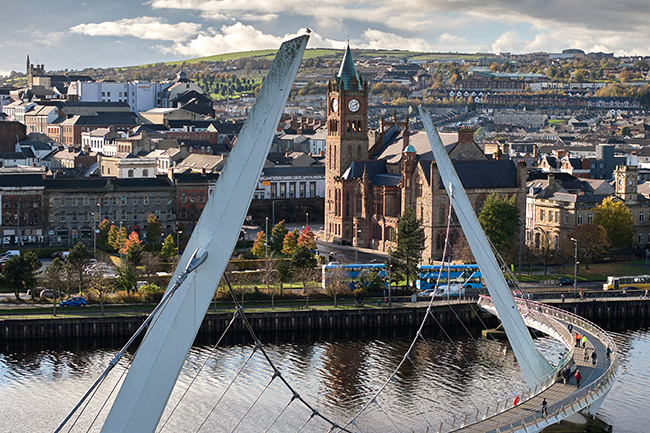
When you reach this peaceful area in northern Donegal, walking high in the hills, running on beaches as golden as any in California and surfing are what it’s all about. This was pretty much how we would joyfully have spent our whole holiday – that is until we learnt about the wildlife to be found on the Wild Alpaca Way and Inishtrahull Island.
The Wild Alpaca Way
‘Here they come’ said one of our group, alerting us to a mass of about 20 beautifully black, brilliantly brown and gorgeous grey alpacas bumbling towards us, leads flying in the breeze ready for our alpaca walk. Run by John McGonagle and his family the Wild Alpaca Way gives visitors the chance to take some of their 23 alpacas on a one-hour walk with an almost birds-eye view of the beautiful peninsula.
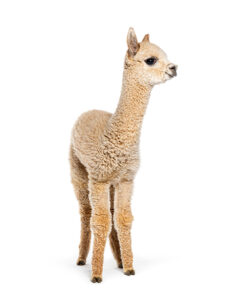
Before setting off, we’re given a brief safety talk and have a photo with some alpacas at the top of Knockamany Bens. With Donegal’s famous hills and the golden sands of Five Finger Strands beach in the background, it’s a backdrop to rival New York’s skyscrapers. My family, myself, our alpacas (Thomas, Benji and Chestnut) and the others we’re travelling with set off weaving carefully in and out of one another, laughing as the alpacas stop unexpectedly to chew grass.
“Put your arm around him!” John encourages, as he keenly helps us get a memorable snap at the second photo spot. I tentatively do so. As Chestnut and the other alpacas barely move (they’re clearly used to life in the spotlight,) I chill, making the most of patting Chestnut’s silky-smooth coat at the same time. As we move on and finish the route, McGonagle and sons unload some bags of alpaca food. It is feeding time for the alpacas and one final, unexpected treat for us!
Having said goodbye to the alpacas, we take in some of the best views of the Inishowen Peninsula one last time as a typical Donegal wind cools us down from the untypically hot May weather.
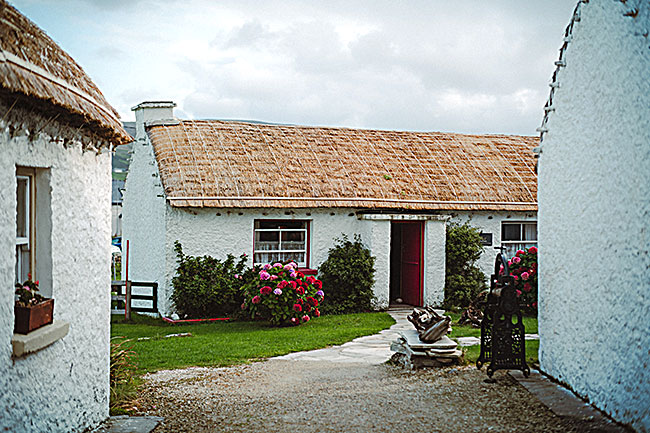
Up so high in the grass-covered hills, even the sky does not feel too far out of reach. Far below the houses dwindle like a model village, resting by the peaceful lull of Trawbreaga Bay’s waters (don’t the Gaelic names of Irish locations sound so fabulously mystical?) Though I could stand here in a peaceful daze forever it’s time to jump back into our cars. Tomorrow is another busy day.
Trip to Inishtrahull Island
One sleep later, we walk down to Bunagee pier in Culdaff, a seaside town with a long and beautiful blue-flag beach that is well worth a visit. We find our boat, say hello to the captain and jump aboard donning our orange life vests. Looking overboard, the water is so clear I can see seaweed and tiny fishes swimming below. On a hot and sunny day, Ireland’s beaches really do rival Europe’s holiday hotspots.
The boat pulls away towards our destination, Inishtrahull, Ireland’s most northerly island and former home to a small fishing community. Following an increase in large trawler fishing and a subsequent depletion of stock in the waters around Inishtrahull, the island’s last residents left for the mainland in 1929. Its final lighthouse keeper followed in 1987 following the construction of a new and automated lighthouse. The island now offers visitors a glimpse into local 1920s Donegal life as well as giving scuba divers the chance to explore its shipwrecks.
Thanks to an abundance of flora and fauna and its designation as an area of special conservation, Inishtrahull is also a great place for wildlife lovers. The island is a safe haven for seals, a variety of birds and Donegal’s famous basking sharks. Bottlenose dolphins (regular inhabitants of Donegal seas) have also been spotted around the island.
Its place as a wildlife paradise becomes clear as soon as we dock; a pod of speckled grey seals greet us. Almost as curious of us as we are of them, the seals float around looking up at us from the water, hilariously sticking their heads just above sea-level to inspect their guests. As we disembark, the children in our group adventure in nature’s playground, running freely across rocks jutting out into the sea.
The rest of us enjoy a picnic before exploring the island, taking a walk through Irish history. We wander around the school master’s former home and school as well as the crumbling stone cottages. Considering that only 80 residents lived on the island at its peak in 1911, we’re impressed to learn that some of these houses were built by former inhabitants who, as per local custom, gifted newlyweds with a hand-built house – now that’s community spirit!
We ramble up to the lighthouse, a poignant sight for emigrants leaving Ireland for work in America. One leaver wrote: ‘There was … one milestone to pass, Inishtrahull lighthouse off the coast of Donegal was the last glimpse emigrants would have of Ireland and everyone stayed on deck until it disappeared.’ Standing here, surrounded by greenery and blue seas, I can’t help wondering how those emigrants must have felt waking up for the first time surrounded by the bustle of America.
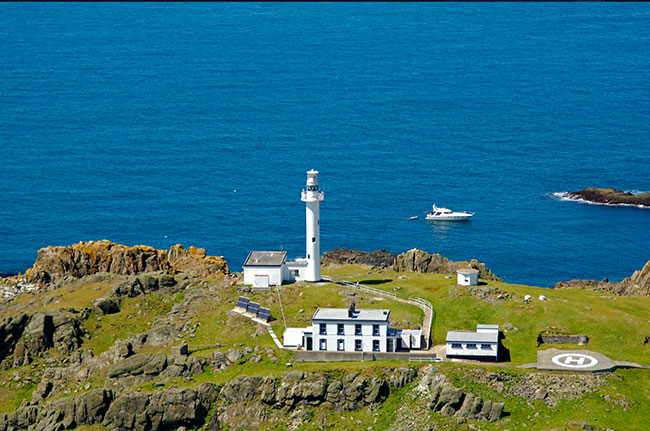
After two hours, we are journeying back to the mainland, enjoying the breeze in our hair and living in hope of our ultimate wildlife find – dolphins! Some of us are distracted: lounging lazily in the fresh air, taking in the towering cliff faces on Glengad Head or acting like true seafarers looking out on the ocean. A few stay focused, keeping their eyes on the water, luckily …
‘Over there, over there!’ Everyone darts to the excited cries. Two bottlenose dolphins jump in the air, right on cue! I rush to tell our guides. ‘Over there!’ I point and the captain gladly takes us closer. The dolphins continue to jump in and out of the water. My eyes are welling up with excitement, face breaking out into a smile at the sight of dolphins surfacing all over the place!
Our boat stops in the middle of the dolphins. They. Are. Everywhere! They come closer and closer to our boat, swimming around together and diving underneath. Surrounded, we run around the boat, following them as they swim sideways along its edge and dive underneath. It is clear that we have struck incredibly lucky and stumbled upon the Rosetta Stone of wildlife finds, the emerald in Ireland’s oceans, our very own gold dust! In other words, we’ve found ourselves amongst a whole pod of dolphins!
When you reach this peaceful area in northern Donegal, walking high in the hills, running on beaches as golden as any in California and surfing are what it’s all about.
We whip out our phones to video the experience which turns into a slight mess of side of the boat and shoe shots – we were too keen to experience what was in front of our eyes without the extra filter. Someone in the 21st century too taken by the experience to capture it properly on a mobile? Now that is surely a sign of a good time.
‘Til next time Donegal!
We spend the rest of the evening talking about the experience and can’t wait to tell everyone back home in the city. In doing so, we come across several people who, like me, are amazed that this northern pocket of Ireland holds such a range of wildlife experiences. And what better time to make this discovery? With global warming and the cost-of-living taking the shine off of flying to long-haul destinations plus animal-themed amusement parks and zoos increasingly plagued by animal welfare issues, maybe seeing such novelties just a short plane or ferry-ride away in the hills of Donegal is just what’s needed.
• Prices for the Wild Alpaca Way start at 20 euros per person per walk. Walkers can take one of three walks available daily: 11:00, 13:00 or 15:00. Full details available on the Wild Alpaca Way website.
• To book a visit to Inishtrahull, visit the Inishowen Boating Facebook page.
_____________



